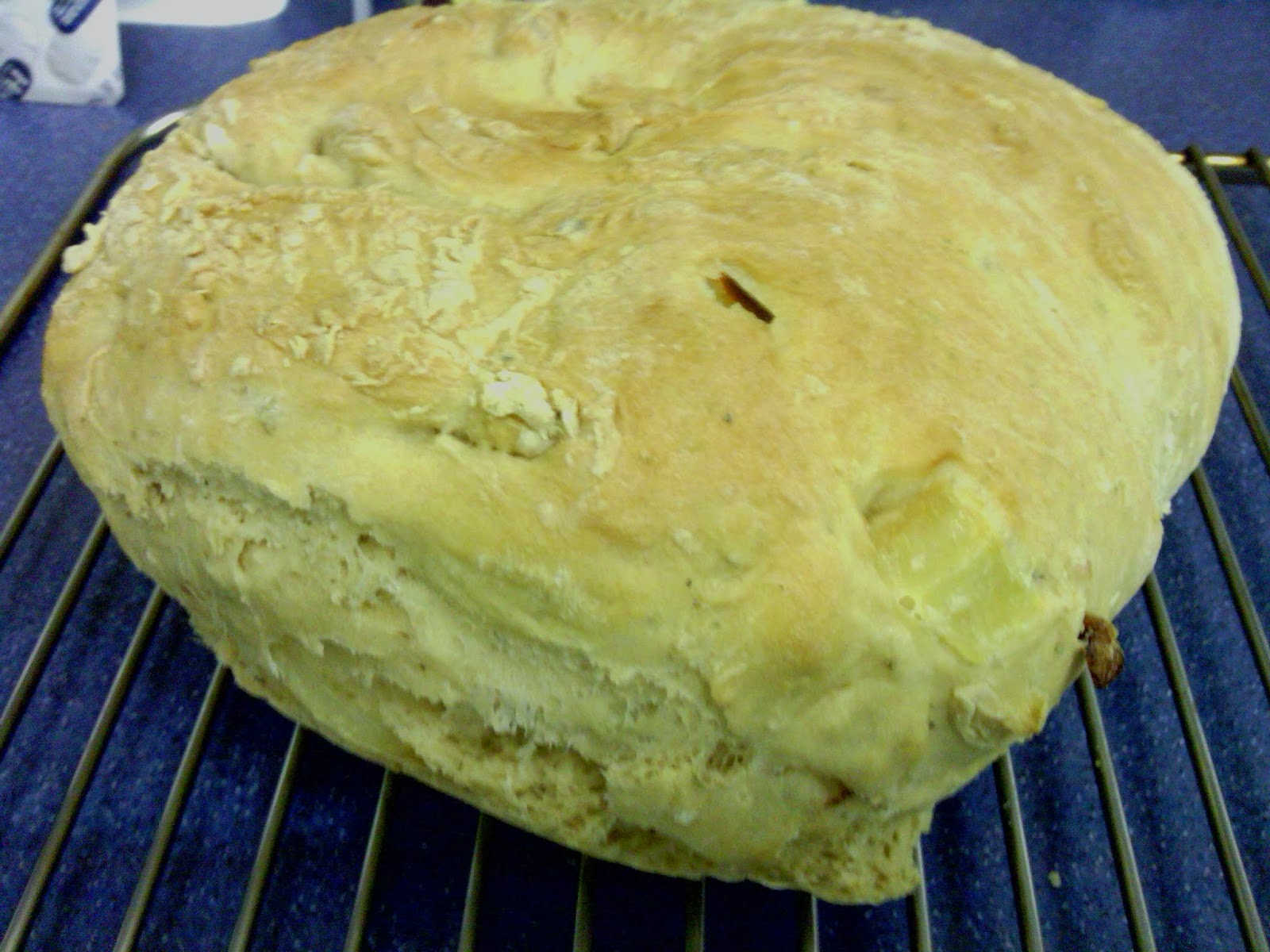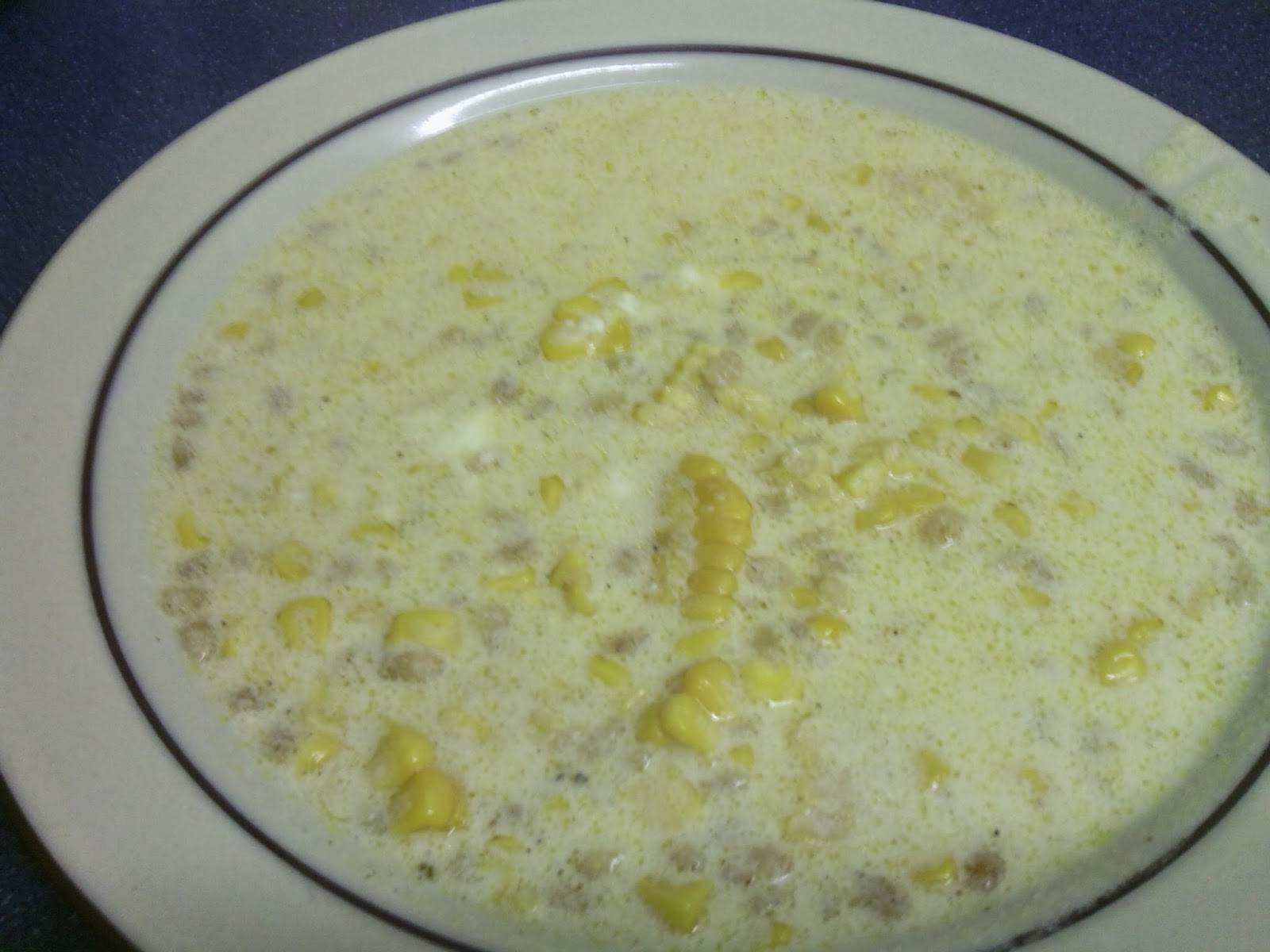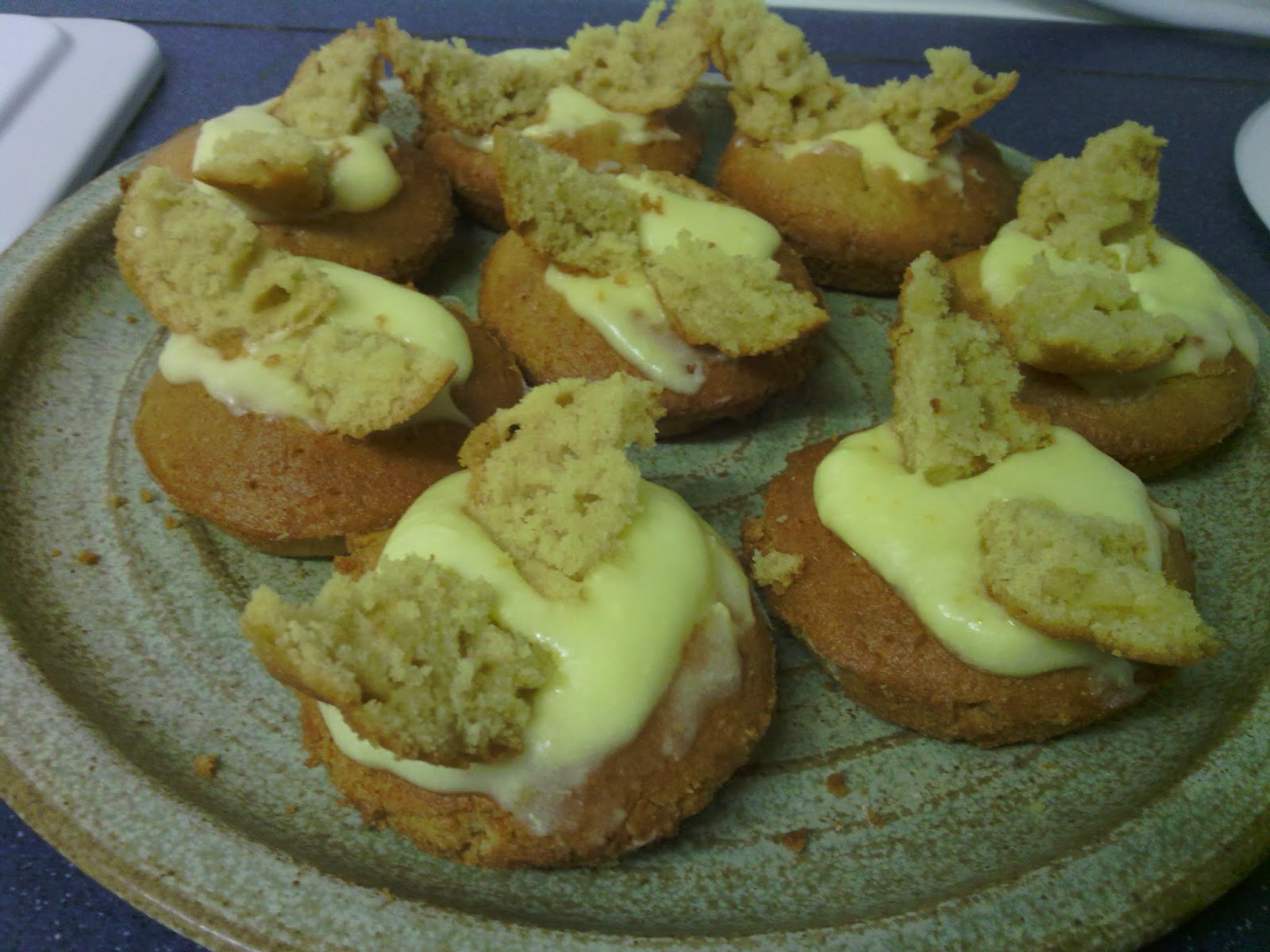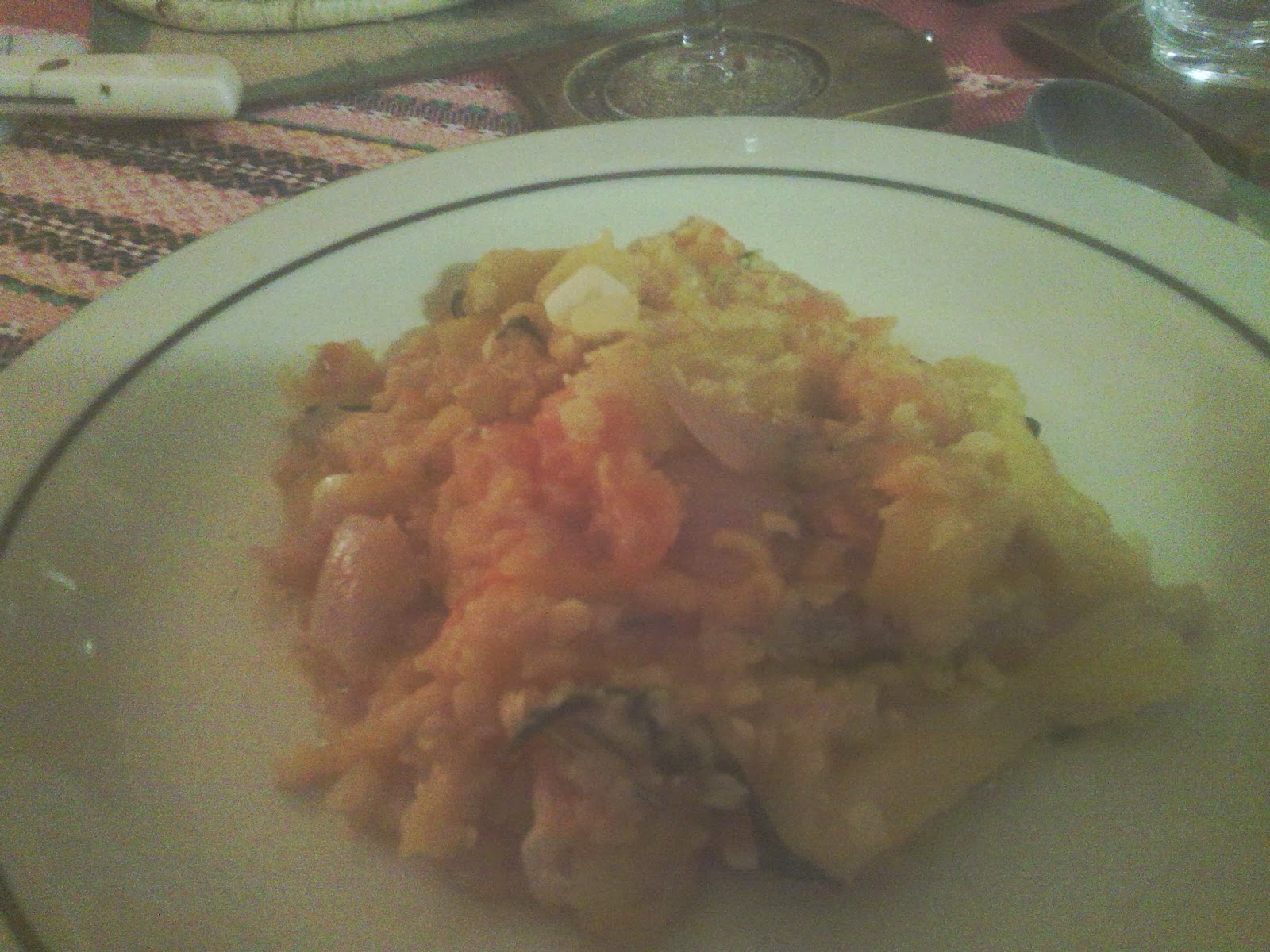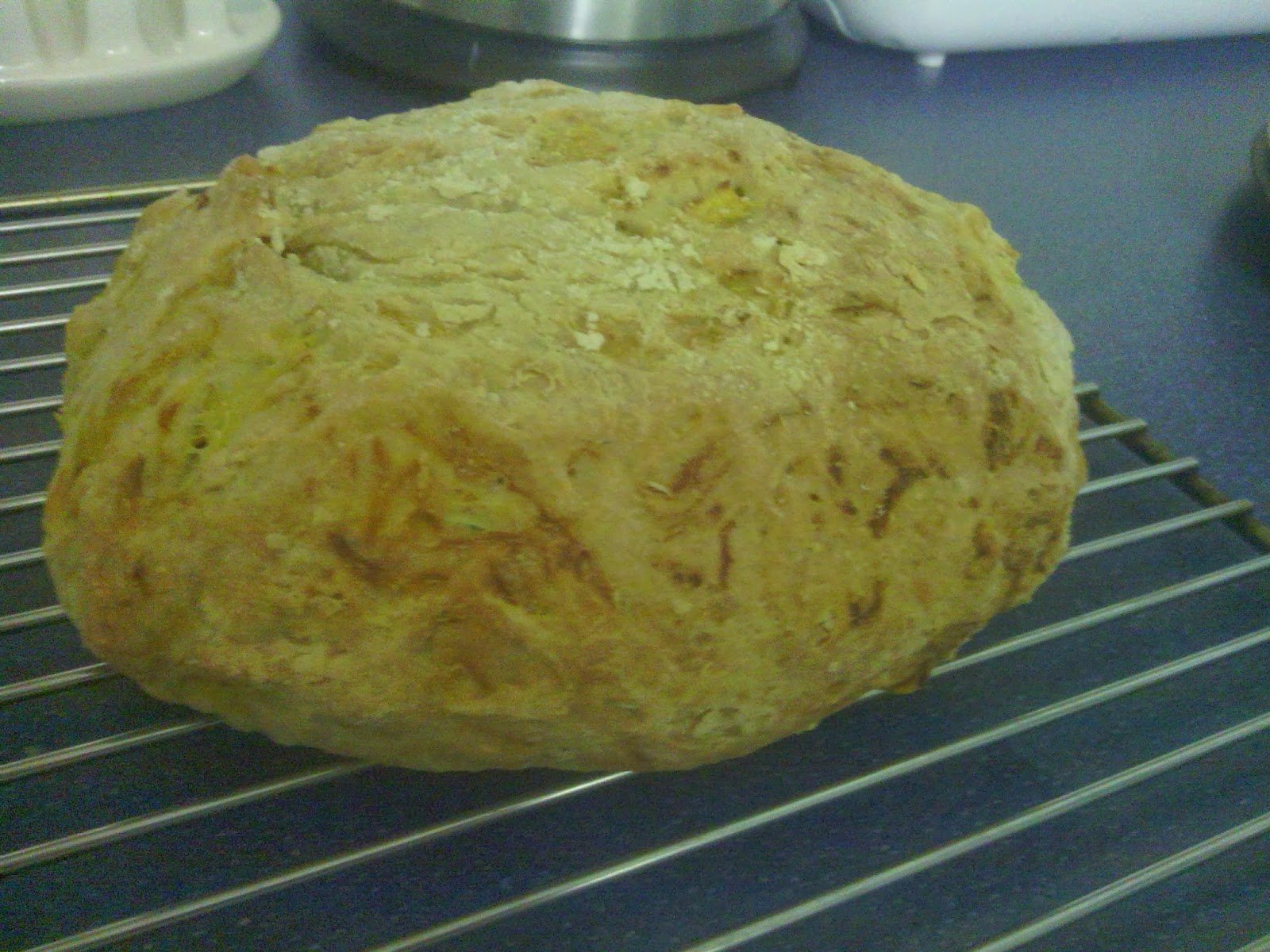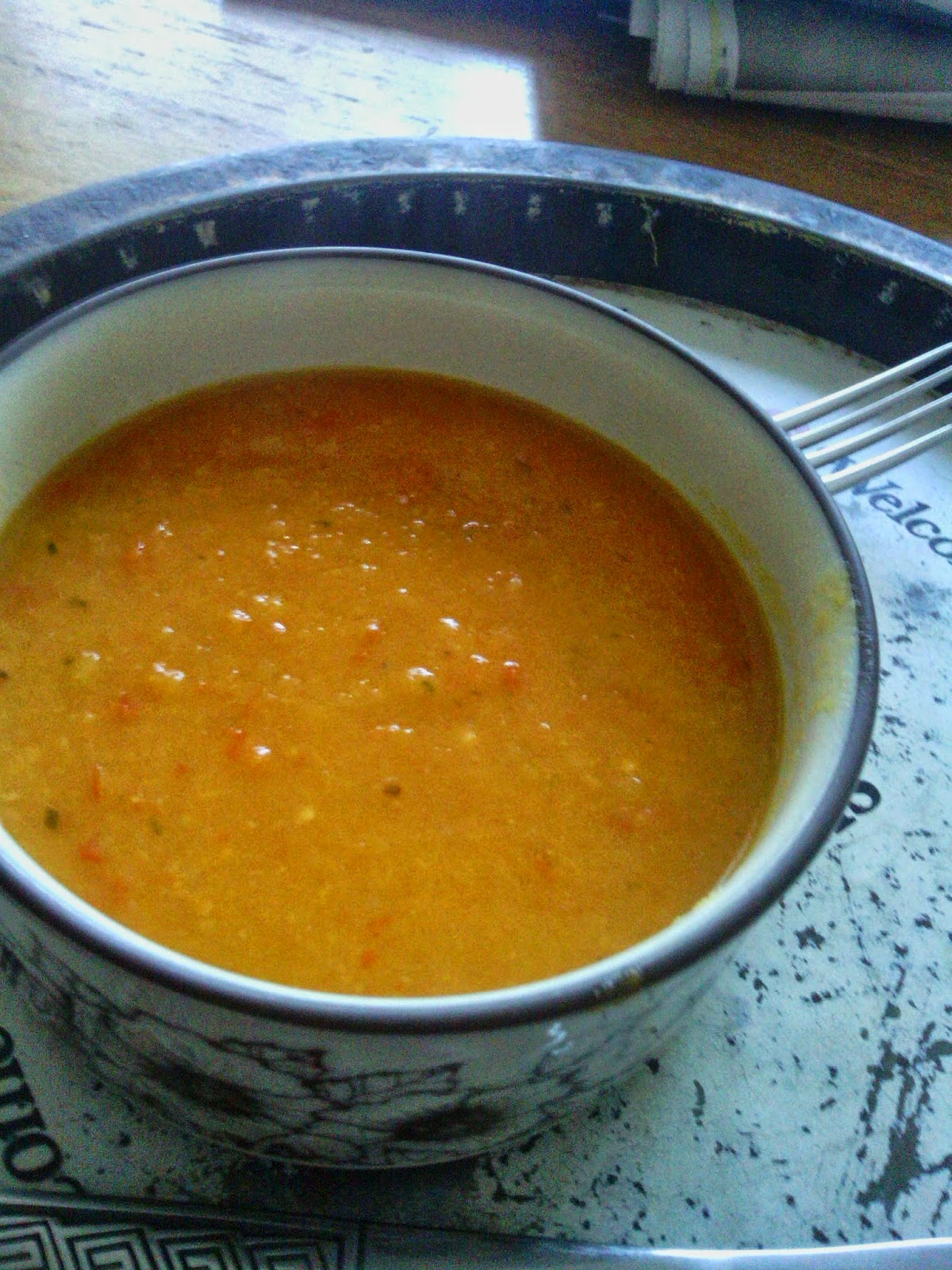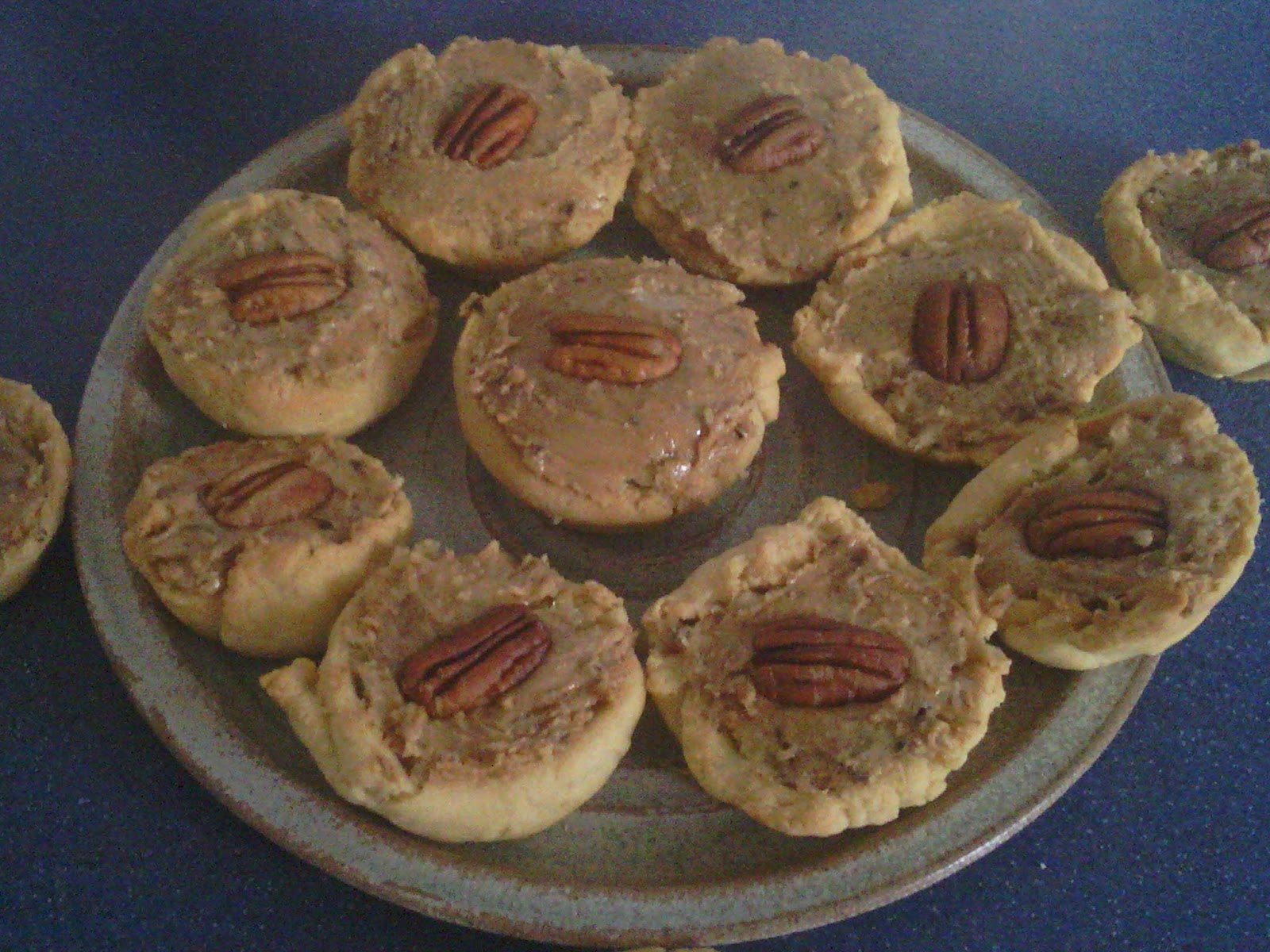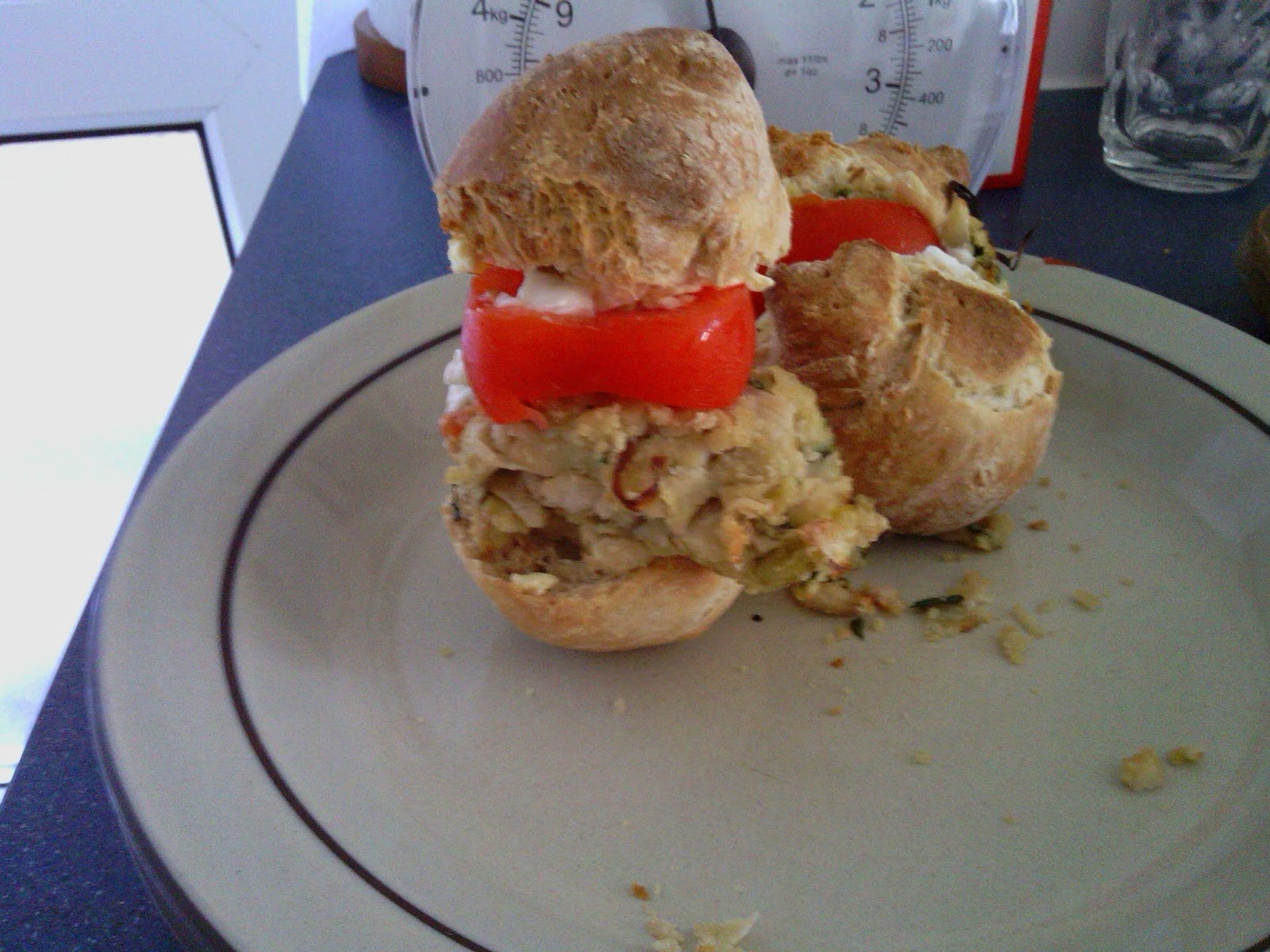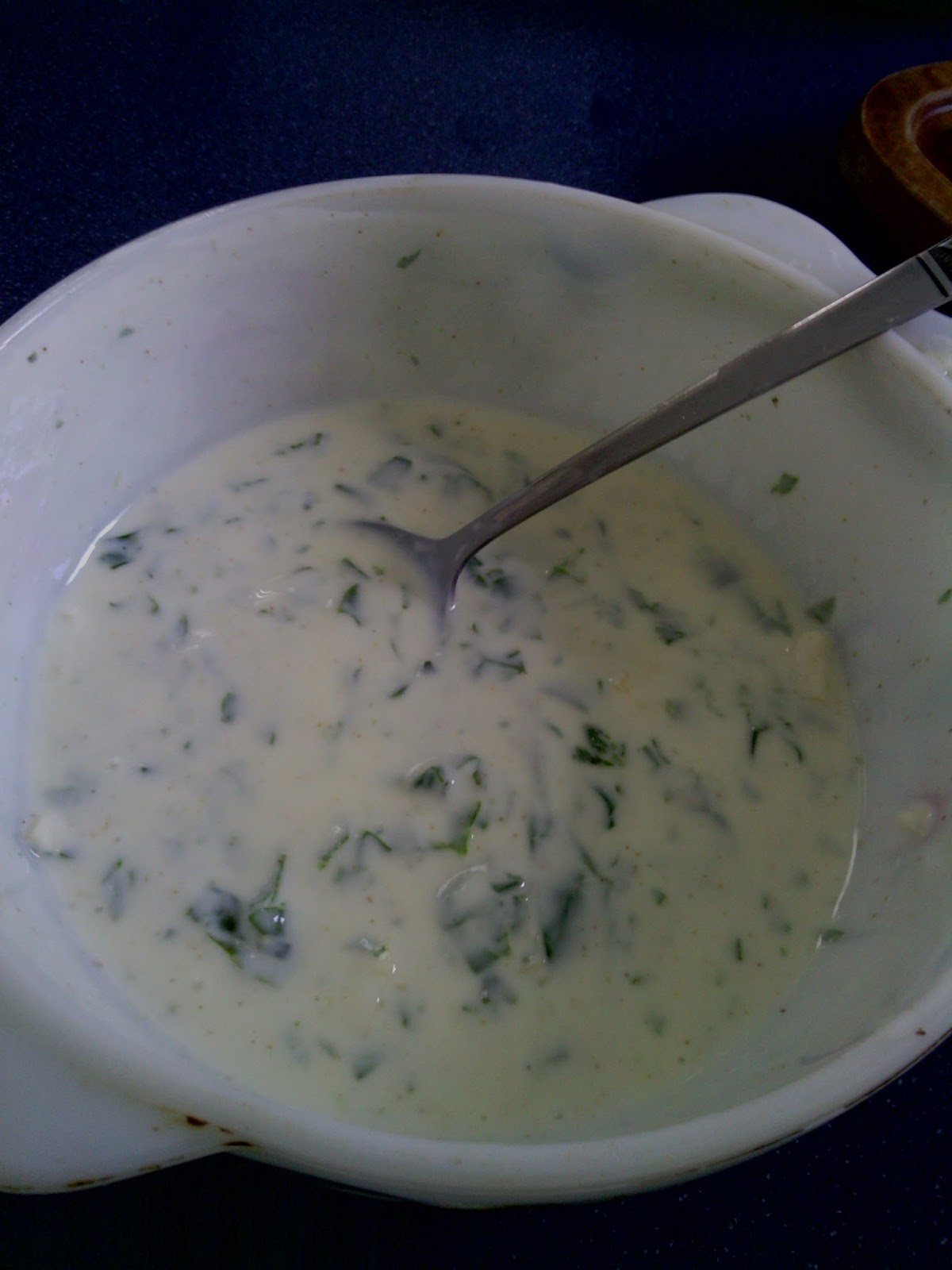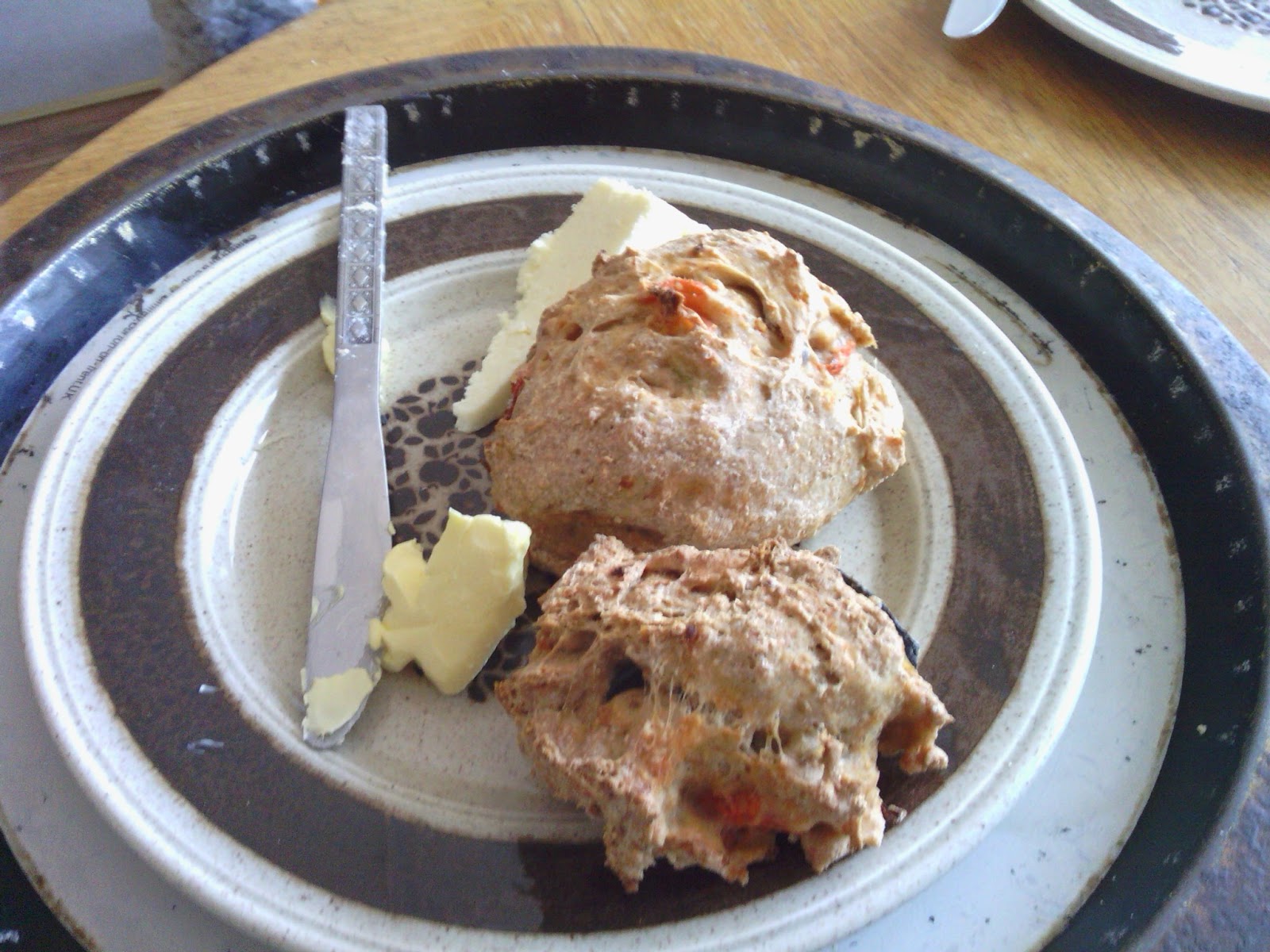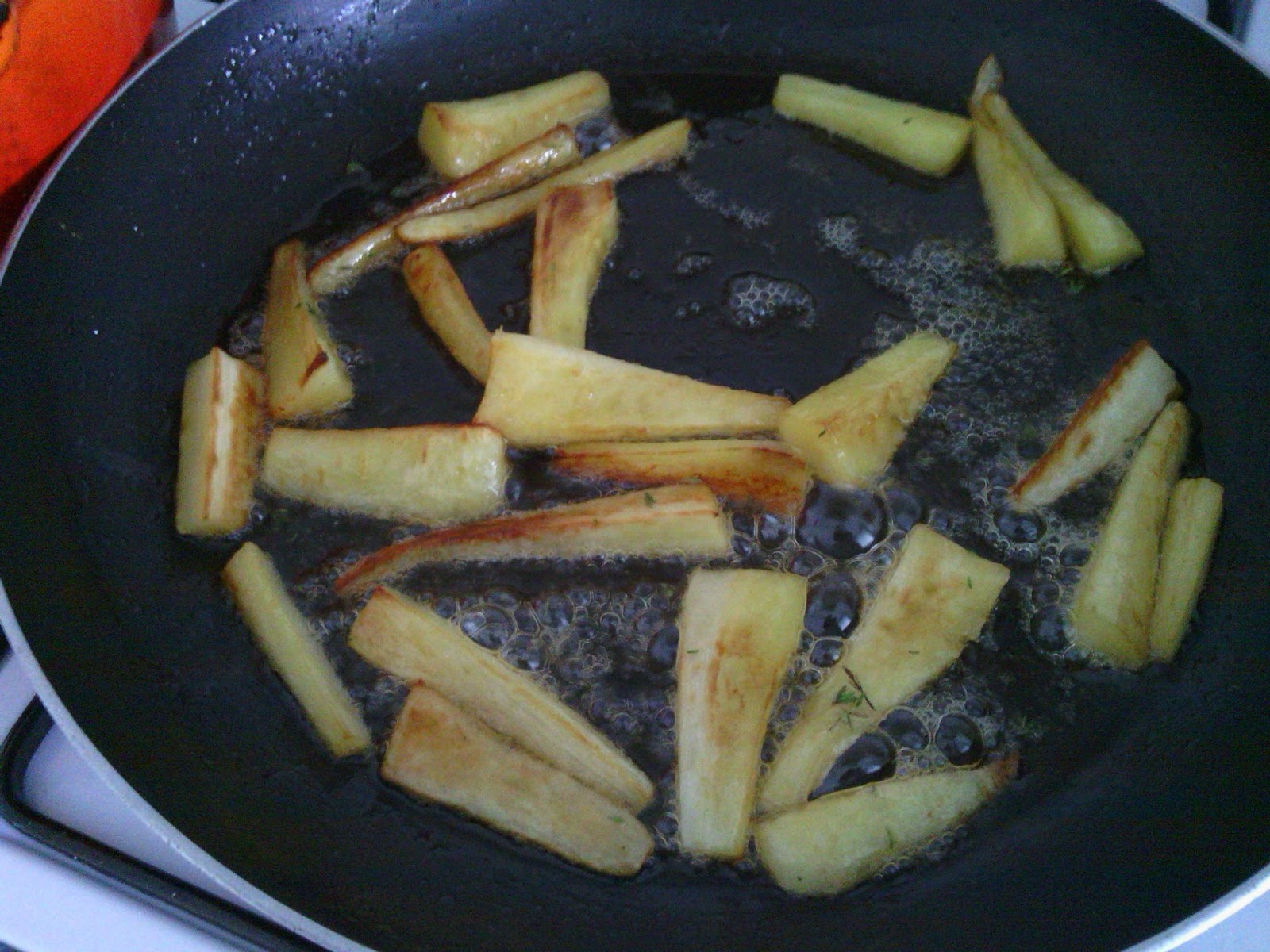The month of December was soon going to be on me so I elected to make a pie that I often have at this time of year. The recipe is derived from a dish sometimes known as a Starry Vegetable Pie. However I have my own way of preparing the vegetables that improves on the original recipe.
I first took three large Sweet Potatoes, half a large Swede and four Carrots and peeled them as well as topping and tailing the Carrots and the Sweet Potatoes. I then cut these vegetables into small centimetre squared cubes, which in the case of the Swede was no mean feat considering it was tough and wiry and as anyone who has prepared Swede will tell you this makes it exceptionally difficult to peel and cut.
I steamed the vegetables for around twenty minutes until they were soft enough for a fork to go through them without too much trouble. I then left the vegetables in a sieve and covered the sieve with a pan lid to keep the vegetables warm.
In the meantime I put two diced red onions and four finely sliced cloves of garlic into pan with half a pint of vegetable stock and half a pint of red wine, seventy five grams of puy lentils and seventy five grams of red lentils and a quarter of a pint of boiling water and simmered the contents of the pan fiercely for around half an hour. So as to ensure the pan did not boil dry I topped it up periodically with cold water and wine. After half an hour when the lentils had softened I added some sprigs of fresh Rosemary and let the contents of the pan stew slowly on the hob until there was enough liquid to cover the other ingredients but not too much that the rest of the contents of the pie when cooked would be drowned.
While the lentil mixture stewed on the hob I made the puff pastry that the filling of the pie was to be contained inside. The way to make the pastry is to first use the same technique as that used to make shortcrust pastry, i.e. by taking ten ounces of plain flour and five ounces of margarine and working them into fine breadcrumbs before using some milk or water to bind them into a pastry until you have a pliable pastry dough.
The way to make puff pastry from this point is to roll the pastry out flat and then fold half of it towards the centre of the pastry that has been rolled out and then roll the pastry with a rolling pin. This technique should be repeated around ten times so the pastry has plenty of air in it.
When the pastry was completely rolled I used half of it to line two centimetre deep and twenty-five centimetre wide pie dish, which I had previously greased. I then added the steamed vegetables, twenty five grams of crushed walnuts and the lentil mixture which I poured on top of the vegetables so that a proportion of the liquid they had been cooked in filtered evenly throughout the pie.
I then squeezed the juice of half a lemon onto the filling of the pie and then covered it with the remaining pastry making sure to press the edges of the pastry that topped it into the edges of the pastry covering the bottom of the dish. I then cut three slits in the top of the pie to allow some of the heat to escape during cooking and brushed the pastry with skimmed milk to keep it from drying up when in the oven.
I cooked the pie in the oven for 30 minutes at 170 degrees (180 for non-fan ovens) until the edges became a golden brown colour and then served it with some boiled peas. The pie proved to have a rich taste thanks to the wine, pastry and the rosemary while the lentils provided plenty of protein and the vegetables gave much substance to the dish. This pie certainly ticked all the boxes for being a fortifying winter meal.
 |
| Golden brown at the edges and ready to serve |
 |
| A cross section of the pie midway through the meal. |

